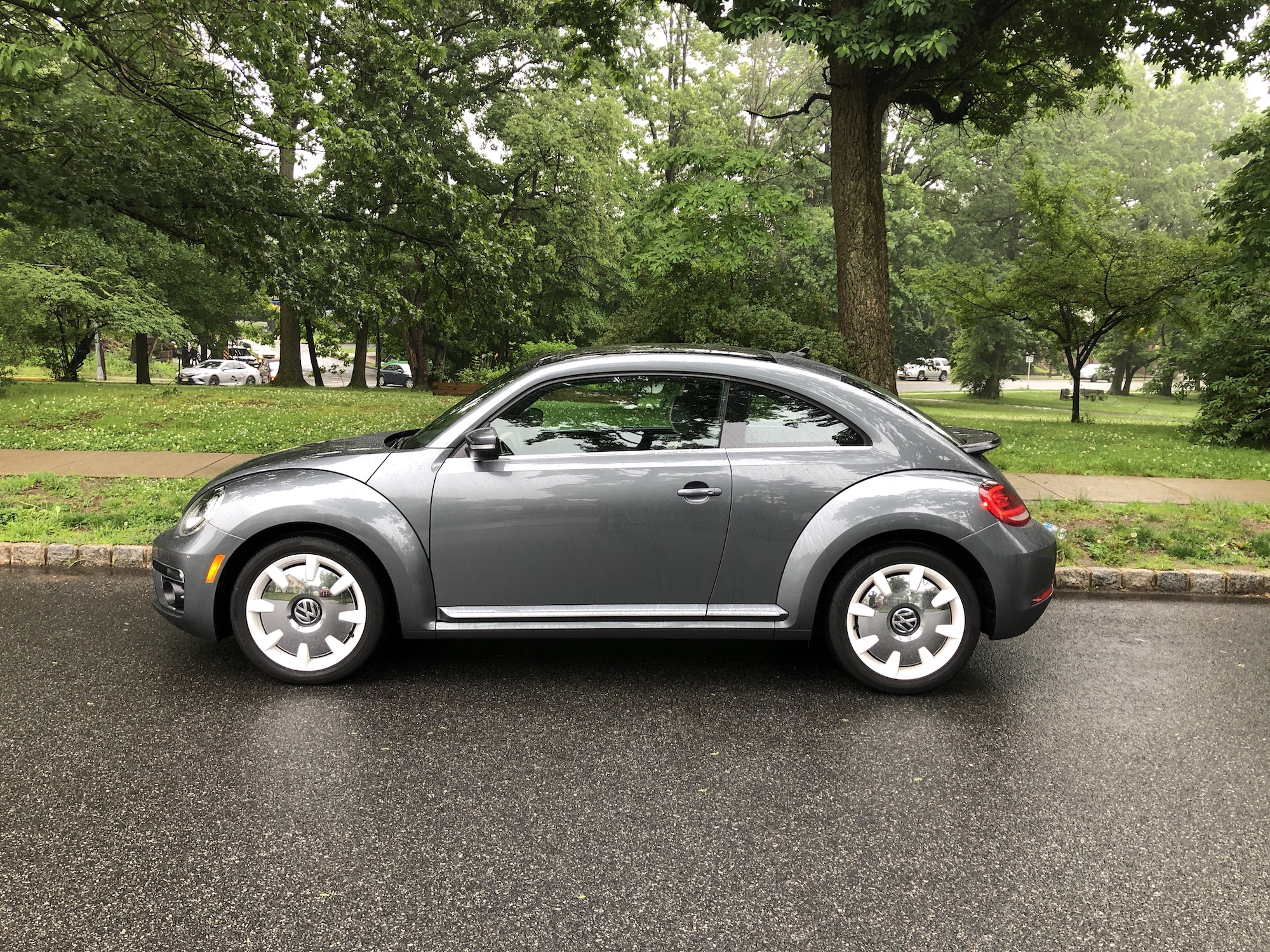- The Volkswagen Beetle, created in the late 1930s as the “People’s Car” and later a huge success in postwar America, has been retired. The Final Edition model is rolling out of the VW factory in Mexico.
- I drove a $26,890 Final Edition VW Beetle and got one last chance to explore its virtues.
- The VW Beetle is still a great car at a good price. I’ll really, really miss it.
- Visit Business Insider’s homepage for more stories.
Well, it’s over. Volkswagen has decided to discontinue the iconic Beetle, which, depending on how you count the years, has been around since 1938.
The modern iteration goes back to the late 1990s, updated in the 2000s. Now the automaker is offering a “Final Edition” of the so-called “A5” version, as it did for the preceding “New Beetle” that captured the public’s imagination 20 years ago.
“Style cars” such as the Beetle are victims of the consumer rush to somewhat cookie-cutter crossover SUVs. That’s the problem with nostalgia: because it already is old, it can get old fast even after it’s revived.
For a long time, I didn’t think much of the revived Beetle, but once I drove it, I developed a crush on the adorable two-door hatch. The rear-engined Beetle of the 1970s that I encountered a fair amount growing up had been succeeded by a modern, front-engined machine that delivered decent power and fair comfort.
Even since, whenever I think about a new car, I think Beetle.
Oh well, now I'll have to think used. But in the meantime, I took a crack at the VW Beetle Final Edition SEL, tipping the price scales at $26,890 (and that just added a $900 destination charge to the sticker). Here's how it went:
Behold the 2019 VW Beetle "Final Edition" SEL, in a handsome "Platinum Gray Metallic" paint job.

It's the end of the road for the iconic Beetle, which has been in production in this renewed form since the late 1990s, and in this model since the early 2000s. No more Bugs will roll out of the factory in Mexico.

Over 21 million of the famous Beetle were manufactured, beginning in the late 1930s. The Bug really took off when it landed in the US in the late 1950s, and it's long been associated with the 1960s counterculture.

A few years ago, I sampled an off-road-ready Dune Beetle and sort of fell in love with the unusual set of wheels.

Read the review »
Yep, the Beetle has a distinctive look: that curved front, those bug eyes.

The Beetle is of course unmistakable in profile. A utilitarian design has become an international icon. The proportions, you'll note, are actually perfect.

The 18-inch white alloy wheels were a little weird initially, but I grew to like them.

Likewise the rear spoiler. I'm not sure it's all that useful aerodynamically, although the Beetle isn't slow, just not blisteringly fast: the 0-60mph dash happens in less than eight seconds.

The Beetle badging in chrome is unique to the Final Edition.

The headlights Bi-Xenon ...

... And the running lights are LEDs.

And to be sure the VW badge is front and center.

Opening the hatch reveals the 15-cubic-foot cargo area. It sounds good on paper ...

... But in practice it's a tad awkward. I had to squeeze stuff in at angles. A subwoofer for the audio system consumes some of the space.

Let's step inside! The "Pepper Beige and Black" leather interior was roomy and comfortable in the front.

The dual-glovebox has the dashboard throwback to Beetles of old. It's call "Kaferfach," meaning "bug box" in German.

A large knob in the ceiling console ...

... Operates the large moonroof.

The back isn't very roomy. The VW is a four-seater, and the rears can handle small children — and adults for short jaunts.

The diamond-stitched details are special to the Final Edition Beetle.

Over the week I tested the VW, I ferried around as many as four people and surprisingly got no complaints.

The leather-wrapped, multifunction steering wheel has a nice, thin feel to it — another throwback feature. The Instrument cluster is a straightforward analog affair.

The VW Beetle Final Edition is powered by a 2.0-liter, turbocharged, four-cylinder engine that makes 174 horsepower and 184 pound-feet of torque.

The power is routed to the front wheels through a six-speed automatic transmission that has both a Sport and a manual mode.

The stick-shift-like setup is actually one of my favorites, and the VW Beetle was one of the few cars that I've enjoyed driving in manual mode.

The 6.3-inch touchscreen infotainment system is sort of antiquated, but navigation, media, and Bluetooth pairing all performed flawlessly in my testing, as did the voice recognition program.

The Fender premium audio system is one of my favorites. It sounds great, especially when you're playing mostly garage rock!

We usually save this part for the verdict. But this time around I'm just sad the Beetle is going away.

I have a soft spot for the Beetle and have often thought about buying one as a backup car. I like that it's fairly rudimentary compared to more modern cars (although the Final Edition SEL came with a nice camera system plus park assist and blind-spot monitoring). I also like that it's small, yet not too small: it's easy to maneuver in the city but also big enough to handle the suburbs and not get pushed around on the freeway.
It would be the ideal vehicle for my retired self, puttering around the New Jersey 'burbs with jaunts to Manhattan and maybe the odd weekend road trip. Fuel economy is fixed-income friendly: 29 mpg city/33 highway/26 combined.
The VW Beetle wouldn't work as a main family car outside of an urban context, but compared with other style-mobiles, such as the MINI Cooper and the Fiat 500, it's a worthwhile option to explore for singles and couples. The design annoys some, but there's no doubting its Bug-ness, so the car isn't trying to hide its lineage.
It's also pretty fun to drive. With less than 200 horsepower, you can get into everything the Beetle has to offer. The steering isn't terribly crisp, and the braking is sort of loose, but the suspension is sharp and once you get to tossing the thing into some corners, you want to toss it into more.
I struggled a bit with turbo-lag from the 2.0-liter motor. It was easy to overcome by tipping the throttle in before asking for power, and even easier in manual mode, but more than few times I wondered where the juice had gone. Overall, this didn't bother me too much, as I didn't see the Beetle as a high-performance, small-engine ride (its siblings, the GTI and Golf, are a different story).
VW sold a little over 14,000 Beetles in the US last year. Not bad, but not enough to keep the vehicle around. Consumers want four-door crossover SUVs these days, disadvantaging the awkward aspects of two-door hatches.
So, so long, Beetle. It's not like we hardly knew ya, after six decades. But I always shed a salty tear when a model drives off to that great garage in the sky, and in this case, we really are sending off one of the most incredible auto designs in human history. (Fortunately, VW built enough Beetles to keep us in used Bugs for a while).
So good night, sweet Beet! I'm glad I got a Final Edition ride.

